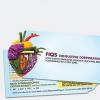Hi Shaf03,

Welcome to the IFSQN forums.
As olenazh has posted, product analysis is not specific in the FSSC 22000 Certification Scheme. Your product analysis will be based on information from ISO 22000 8.5.1.3 Characteristics of end products
The organization shall ensure that all applicable statutory and regulatory food safety requirements are identified for all the end products intended to be produced.
a) product name or similar identification;
b) composition;
c) biological, chemical and physical characteristics relevant for food safety;.
This initial work can guide you on what parameters you need to test in your finished products.
Regarding the need for testing for Heavy Metals, this depends on your product and facility and associated risks:
Ingredient-related chemical hazards - Heavy metals in or on produce raw agricultural commodities
Facility-related chemical hazards - Heavy metals due to leaching from pipes, lead solder, equipment, containers, or utensils
Some spices are known to be a risk because of chemical adulterant to change the colour of the spice to suggest that it is of a higher quality including Turmeric (Lead chromate) and Paprika (Lead oxide).
You will need to perform verification activities (including product testing where necessary) as per ISO 22000 8.8 Verification related to PRPs and the hazard control plan - 8.8.1 Verification.
The Shelf Life requirements come from FSSC Additional Requirements - Product Development and the need for initial validation. Following that, on-going shelf-life verification can be achieved by holding product at the prescribed storage temperature until end of life then carrying out assessment and analysis. For very long life ambient products you may need an accelerated test based on elevated temperatures and some evidence that the accelerated test gives an accurate result.
Your shelf life testing protocol will be based on the expected conditions the product will be subject to for its shelf life. A protocol for a fresh chilled product with a 21 day life could be for example:
3 Days @ 5 °C – to reflect controlled Chill Chain
18 Days @ 8 °C – to reflect a domestic Refrigerator
Then Organoleptic tests plus TVC/Entero/Y&M
Note: I usually test at end of life plus a day or two for fresh products.
Kind regards,
Tony














